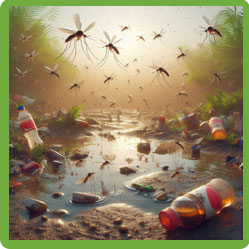
Communicable Diseases
Communicable diseases are illnesses that can spread from one person to another, caused by tiny organisms like bacteria, viruses, parasites, or fungi. They can cause mild to severe symptoms and affect public health by causing outbreaks and epidemics.
What is a communicable disease?
A communicable disease, also known as an infectious disease, is a disease that can be transmitted from one person to another through direct or indirect contact. Communicable diseases can be caused by pathogens such as bacteria, viruses, fungi, and parasites, and can spread through various modes of transmission, including respiratory droplets in the air, bodily fluids, and contaminated surfaces.
What are pathogens?
A pathogen is a microorganism, like a bacteria or virus, that can make you sick. They can enter your body in different ways and cause a range of illnesses. Pathogens can change over time and become resistant to treatments, making them hard to control. Preventing the spread of pathogens involves things like washing your hands, getting vaccinated, and controlling insects that can carry them.
There are several different types of pathogens, including:
- Bacteria: Single-celled microorganisms that can be found in soil, water, and living organisms. Some bacteria are beneficial and necessary for life, while others can cause a variety of infections and diseases.
- Viruses: Submicroscopic infectious agents that can only replicate inside living cells of organisms. They can cause a wide range of diseases, from the common cold to more serious illnesses like HIV/AIDS, influenza, and COVID-19.
- Fungi: Multi-cellular or single-celled organisms that can cause infections in humans and animals. Some fungi are also used in the production of food, medicine, and other products.
- Parasites: Organisms that live on or within another organism and feed off it. Examples of parasites include protozoa, helminths, and arthropods, which can cause diseases such as malaria, schistosomiasis, and Lyme disease.
Revision Notes

The Cornell method is like a supercharged note-taking system that helps you ace your revision!
Print out our blank revision notes pages to help you revise.
How to make effective revision notes with the Cornell method.
Exam Questions & Answers

Download and print off practice our FREE worksheet with exam style questions on Cell Biology.
Diseases
Viral Disease: Measles
Measles is a highly contagious viral infection that primarily affects children, although adults can also get it. The measles virus is spread through respiratory droplets when an infected person coughs or sneezes. Symptoms of measles typically include high fever, cough, runny nose, and a rash that spreads all over the body.
Measles can lead to complications such as ear infections, pneumonia, encephalitis (inflammation of the brain), and even death in rare cases. Before the introduction of the measles vaccine, millions of people around the world were infected with the disease every year, and it caused many deaths, particularly in developing countries.
Measles can be prevented through vaccination with the MMR (measles, mumps, and rubella) vaccine, given to children in two doses.
Viral Disease: HIV
HIV stands for Human Immunodeficiency Virus, which is a virus that attacks and weakens the immune system, making it difficult for the body to fight off infections and diseases. HIV is transmitted through contact with infected bodily fluids, such as blood, semen, vaginal fluids, and breast milk. Common modes of transmission include unprotected sexual intercourse, sharing needles or syringes, and mother-to-child transmission during pregnancy, childbirth, or breastfeeding.
HIV is treated with antiretroviral therapy (ART), which involves taking a combination of medications that work to suppress the virus and slow down its progression. ART is highly effective and can allow people with HIV to live long and healthy lives.
Late-stage HIV, also known as AIDS (Acquired Immunodeficiency Syndrome), occurs when the immune system is severely weakened by HIV and the person develops certain opportunistic infections and cancers. AIDS is a serious condition that requires ongoing medical care and treatment. While there is no cure for HIV or AIDS, antiretroviral therapy (ART) can help suppress the virus and slow down the progression of the disease.
Viral Disease: Tobacco mosaic virus
Tobacco mosaic virus (TMV) is a virus that infects plants, especially those in the tobacco family. TMV can cause severe damage to plants, including stunted growth, mosaic-like patterns on the leaves, and reduced yields. The damage to the leaves means that the plant can't carry out photosynthesis and therefore effects the plants growth.
Fungal Disease: Rose black spot
 Rose black spot is a common fungal disease that affects roses, caused by the fungus Diplocarpon rosae. The disease appears as black or dark purple spots on the leaves of infected plants, which can cause the leaves to turn yellow and fall off prematurely. If left untreated, rose black spot can weaken the plant and reduce its overall health and vigor because of lack of photosynthesis.
Rose black spot is a common fungal disease that affects roses, caused by the fungus Diplocarpon rosae. The disease appears as black or dark purple spots on the leaves of infected plants, which can cause the leaves to turn yellow and fall off prematurely. If left untreated, rose black spot can weaken the plant and reduce its overall health and vigor because of lack of photosynthesis.
The fungus that causes rose black spot thrives in warm, humid conditions and can spread rapidly during periods of wet weather. The disease can be prevented or controlled by implementing good cultural practices, such as planting roses in well-draining soil, avoiding overhead watering, and removing and disposing of infected leaves and debris.
Protist Disease: Malaria
 Malaria is a disease caused by a protist (parasite) that is spread through mosquito bites. It can cause fever, headaches, and other symptoms. It is a major problem in many parts of the world, particularly in sub-Saharan Africa.
Malaria is a disease caused by a protist (parasite) that is spread through mosquito bites. It can cause fever, headaches, and other symptoms. It is a major problem in many parts of the world, particularly in sub-Saharan Africa.
Female mosquitoes spread malaria by biting a person who is infected with the malaria parasite. The parasite lives in the person's blood and is taken up by the mosquito when it feeds. Inside the mosquito, the parasite multiplies and develops, eventually migrating to the mosquito's salivary glands. When the mosquito bites another person, it injects the parasite along with its saliva, which can then infect the new person.
The best way to prevent malaria is to avoid mosquito bites by using nets and insecticides. It can be treated with medication. There are efforts underway to control and eliminate malaria.
Bacterial Disease: Salmonella
 Salmonella causes food poisoning. It is commonly found in contaminated food, such as raw or undercooked meat, poultry, eggs, and dairy products, as well as in fruits and vegetables that have been contaminated with animal faeces.
Salmonella causes food poisoning. It is commonly found in contaminated food, such as raw or undercooked meat, poultry, eggs, and dairy products, as well as in fruits and vegetables that have been contaminated with animal faeces.
The symptoms can include fever, diarrhoea, abdominal cramps, and vomiting. Prevention of Salmonella infection involves taking proper food safety precautions, such as cooking food to the appropriate temperature, washing hands and surfaces frequently, and avoiding cross-contamination between raw and cooked foods.
Bacterial Disease: Gonorrhoea
Gonorrhea is a sexually transmitted disease (STI) It is spread through sexual contact with an infected partner.
The symptoms of gonorrhoea can include discharge from the penis or vagina, painful urination, and pain or swelling in the testicles or ovaries. If left untreated, gonorrhoea can lead to serious complications, such as pelvic inflammatory disease (in women), infertility, and an increased risk of HIV infection.
Gonorrhea is usually treated with antibiotics. Prevention of gonorrhoea involves practising safe sex, such as using condoms.
How can we prevent communicable diseases?
Here are some ways to prevent or reduce the spread of communicable diseases:
- Practice good hygiene: Frequent hand washing, covering your mouth and nose with a tissue or elbow when coughing or sneezing, and avoiding close contact with people who are sick can help prevent the spread of many communicable diseases.
- Get vaccinated: Vaccines can prevent many communicable diseases, such as measles, polio, and influenza. It's essential to get vaccinated according to the recommended schedule to protect yourself and those around you.
- Isolation: If you're sick, staying home from work or school and avoiding close contact with others can help prevent the spread of illness.
- Destroying the problem: Insecticides can kill insects that carry diseases. This can help prevent the spread of communicable diseases.
By following these prevention methods, we can reduce the spread of communicable diseases and keep ourselves and our communities healthy.
Also see Non-communicable Diseases, Preventing Diseases
Revision Notes

The Cornell method is like a supercharged note-taking system that helps you ace your revision!
Print out our blank revision notes pages to help you revise.
How to make effective revision notes with the Cornell method.


